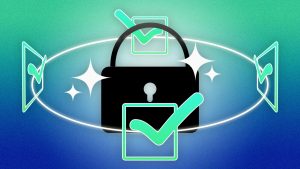Safeguarding sensitive information is a critical priority for individuals, businesses, and organizations in an increasingly digital world. Protecting data from unauthorized access, breaches, and cyber threats requires implementing a range of strategies that address various aspects of information security. One of the most effective strategies is the use of strong, unique passwords combined with multi-factor authentication MFA. A strong password policy involves creating complex passwords that are not easily guessed or reused across multiple accounts. MFA adds an extra layer of security by requiring an additional verification step, such as a code sent to a mobile device or a biometric scan, making it significantly harder for unauthorized users to gain access even if they manage to obtain the password. Regularly updating passwords and enabling MFA for all critical accounts, including email, financial services, and cloud storage, are simple yet powerful steps to protect sensitive data from unauthorized access.

Another key strategy for safeguarding sensitive information is data encryption, which ensures that even if data is intercepted, it remains unreadable to unauthorized parties. Encryption can be applied to data both at rest stored data and in transit data being transferred over networks. Using encryption tools and protocols, such as Secure Socket Layer SSL for internet communications and full-disk encryption for devices, can effectively protect sensitive information from unauthorized access. Additionally, it is crucial to regularly back up encrypted data to secure locations, such as offline storage or encrypted cloud services. This practice ensures that data can be restored in the event of loss, theft, or a ransom ware attack. Maintaining control over encryption keys is also vital; keys should be stored securely and separately from the encrypted data to prevent unauthorized decryption. By integrating encryption into daily data handling processes, sensitive information can be shielded from a wide range of security threats.
Educating and training users on best practices for Protecting your Data is another essential strategy for safeguarding sensitive information. Human error remains one of the leading causes of data breaches, often due to phishing attacks, weak password habits, or accidental data sharing. Regular training programs can help individuals recognize and avoid common security threats, such as suspicious emails, unverified links, and social engineering tactics. Implementing policies that restrict access to sensitive data based on roles and responsibilities further minimizes the risk of unauthorized access. This principle of least privilege ensures that individuals only have access to the data necessary for their tasks, reducing the potential exposure of sensitive information. Additionally, the use of secure communication channels, such as encrypted messaging apps and virtual private networks VPNs, can protect data from being intercepted during transmission. By combining user education with robust access controls and secure communication practices, organizations and individuals can significantly enhance their daily data protection efforts, keeping sensitive information safe from internal and external threats.
